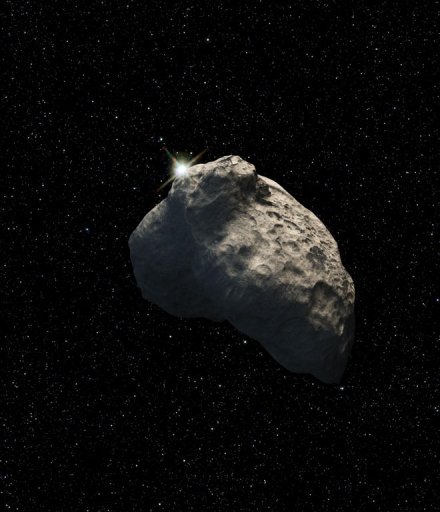
Years of planning combined with a network of telescopes to grab the first pictures of the Kuiper Belt Object (KBO) through a method of celestial alignment, they reported on Wednesday in the British science journal Nature.
KBOs are a population of rocks that orbit the Sun at a distance of between 4.95-8.25 billion kms (3.09-5.15 billion miles), and are believed to be rubble left over from the building of the planets.
Their lonely journey takes them out beyond Neptune, the farthest acknowledged planet, and into a vast region that touches on the deeply chilled fringes of the Solar System.
The rock, KBO 55636, had been tracked by an astronomer in the United States, Massachusetts Institute of Technology (MIT) professor James Elliot, for five years.
Elliot suddenly realised that on October 9, 2009 that his coveted 55636 would pass between a bright star and Earth, an event known as occultation.
When a rock or planet passes between a star and the observer, it causes changes in starlight that can reveal its size and temperature and indicate whether it has an atmosphere, and if so, what kind.
But the October 9 occultation faced a problem.
55636 is very small, and this massively complicated the task of predicting exactly where its tiny shadow would fall on Earth.
Hedging their bets, Elliot and colleagues assembled a network of 21 telescopes at 18 stations along a 5,900-kilometre (3,687-mile) track where, with luck, the occultation could be snared.
On the great day, nine of the stations were found to be outside the occultation and missed it, and seven could not see it because of bad weather.
But two stations in Hawaii, manned by professional and amateur skygazers, struck gold.
Using telescopes with mirrors of only 2.4 metres (96 inches) and 0.34 metres (13.6 inches) -- modest affairs compared with today's behemoths -- they got excellent images of 55636 as it whizzed past at 91,000 kms (57,800 miles) per hour.
To get this achievement in perspective, it was equal to getting a photo of a one-euro coin from a distance of 500 kilometers (312 miles), with the target visible for just 10 seconds.
The rock turns out to be smaller than thought, with a radius of 143 kilometres (89.37 miles), give or take five kilometres, and has a paralysingly low surface temperature of 49 Kelvin, or -224 degrees Celsius (-371 degrees Fahrenheit).
The biggest surprise, though, is that 55636 was also highly reflective. Measurements made it one of the brightest objects in the Solar System, which suggests it is covered with ice.
If so, that is a puzzle.
Space is a harsh environment, which means that objects as ancient as 55636, which split from a large bright rock about a billion years ago, become weathered. They end up duller-looking and darker as they become covered with dust and exposed to solar radiation as the aeons pass.
The known exceptions to this are Pluto, now downgraded to a dwarf planet, and the Saturnian moon of Enceladus, whose bright surfaces are replenished with fresh ice that comes from condensing gases or from volcanoes that spew water instead of lava.
But 55636 is far too small for such mechanisms to work.
So the search is on to figure out why it is so enigmatically white -- and whether theories about space weathering and the outer Solar System need an overhaul.



Reader Comments
to our Newsletter